Soon we will be heading out to the Atlantic, so we decided to explore the opposite end of the spectrum-the Chilean desert. The desert really suits me. The top five things I like about the desert are: Number 5- Sand is really soft to fall on (click here to see our sandboarding attempt), Number 4-it is only one letter away from dessert; Number 3-limited bug population; Number 2-it is warm; and, the Number 1 reason-the low humidity keeps my hair under control.
Oh, yes, of course it is beautiful and the landscapes are like nothing I have ever seen before.
Our town is San Pedro de Atacama in Northern Chile, very near to Bolivia and Argentina. Years ago, before the Spaniards, these regions shared a common culture and way of life. These days, the Bolivians want the land they ceded to Chile in a 1904 Treaty, and Argentina never turned on the pump to Chile’s heavily invested LPG pipeline, so the Pueblos don’t mix as much. (Ask Jason if you want to know more about Nat Gas politics.) Many years before that, the Incan trail passed through the area.
The town is at 7900 Feet Above Sea Level. We stayed at a wonderful hotel and Cristobal, our local guide, led us on our daily excursions. Although I could hear Paul Theroux sneering in my ear at our pampered existence, we enjoyed it thoroughly. The town is filled with small shops and hostels but was originally a small settlement. At the local museum, we learned a bit about the progression of settlers: the Atacamans, then the Incans, followed by the Spaniards. The Spaniards were fooled into coming over the mountains because the Incans told them there was gold to be found. They were greeted by a barren desert. Good way for the Peruvians to get the Spaniards out of their hair.
Most of the buildings are made of adobe and many have adobe walls around a small courtyard. The adobe walls are great at keeping the afternoon desert winds away.
The most striking thing about the landscape is that it goes on forever, and is extremely flat, except for sudden defined mountain ranges, caused by earthquakes and volcanoes. There are large salt flats, made up of salt from the volcanoes; the salt was brought by the water run off and then left when the water evaporated. Its composition is a bit more toxic than table salt so I wouldn’t recommend it.
- Landscape at High Altitude
- Andes in the Distance
- Desert Landscape
- Salt Flats
- Rock or Ancestor?
Each morning and afternoon we went for a hike or a bike ride. We enjoyed hiking in Guatin (translates to Valley of the Cacti) and seeing the tall, several hundred year old cacti with their intricate root systems. At Valle de la Luna, the landscape is formed by crystallized salt, embedded with clay. We walked through areas that were once salt mines, and in the distance could also see abandoned sulfite mines as well as mines from the latest Chilean export, Lithium.
- Old Cactus
- Emerging from the Cavern
- Downhill from Here
- Friends Along the Way
- Salt Flat
The bike paths were a bit rocky, but the real adventure came one afternoon on the banks of the Rio Grande (the one here is not quite as grande as the on up North). We started off at the petroglyphs, which had been left by the Atacaman Nomads and augmented later by the Incans. There are lots of opinions as to what they represent. Maybe they were messages for following travelers, markers for places to come back to, or told the history of important events? When the nomads were traveling through here, the Rio Grande had animals and vegetation along the banks to sustain them. Despite the smaller size now, Cristobal warned us that we would have to traverse the cold river during the hike. After wading through once, we opted to climb up the steep slope, rather than wade through a second time. Little did we know that we were forging a new, somewhat tricky path along the ledge. It took a bit longer to find a feasible way back down than we had planned for, so by the time we waded through the Rio Grande one last time, the sun was setting and Edwin, our 4×4 driver, was walking the banks wondering whether we had been eaten by a puma.
- Sunshine & Blue Skies
- Learning some History
- Rocky Roads
- Crossing the Rio Grande
- Early Petroglyphs
Of course, when we were told about a lake that was so concentrated with salt that one could easily float, the local Polar Bear, aka Jason, had to give the ice-cold water a try. I stayed onshore and looked at the flamingoes.
- Flamingoes Hanging Out
- The Polar Bear Emerges
- Cejar
- After swim snack. Do Bears eat Fruit?
We and a few other hotel guests went stargazing with a local guide and astronomy expert. His combination of local and astronomical knowledge together with boundless enthusiasm made for a great evening. Click here to find out more about his efforts.
For our final hike, we chose to go to Quebrada de Nacimiento (13,760 Feet Above Sea Level) . The hike started with a rocky uphill climbing from 3000 to 4150 meters. Not quite Everest base camp but I could feel the uphill. Have any of you noticed that when you are the slowest hiker, you often get fewer rests because when you catch up to the others they are ready to move on? At least we all ended at the same spot and I, too, got to sit down and enjoy the view.
- It Is Cold Up Here
- Higher Plateau
- Rocky Path
- More Riverbed Hiking
- Old River Bed
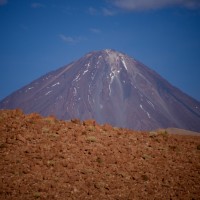
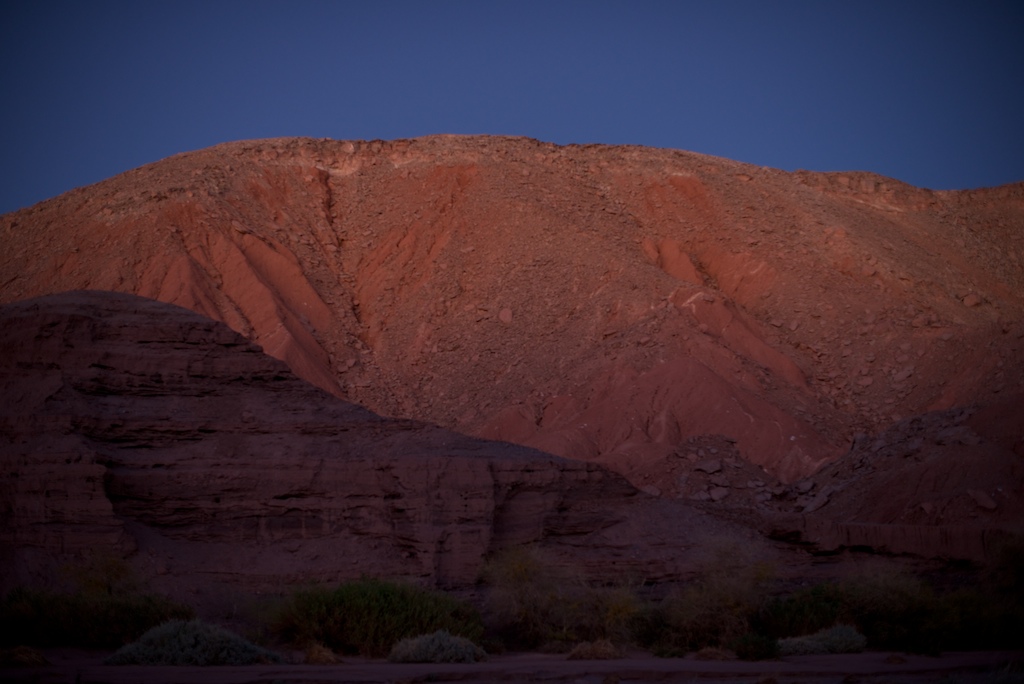


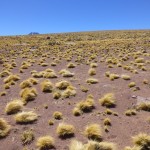
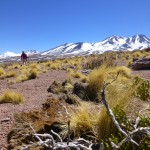
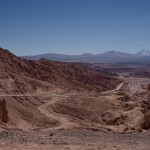
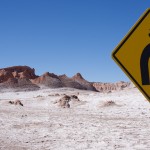

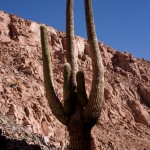
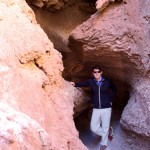

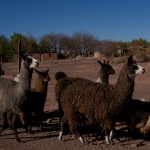
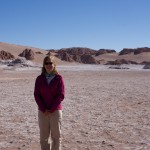
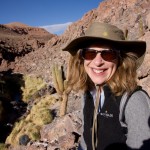
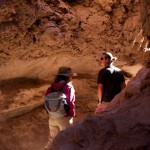
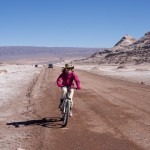
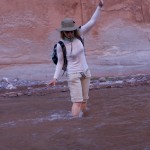

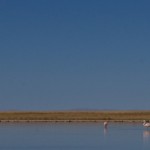
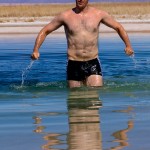

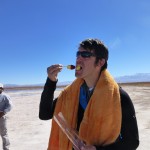

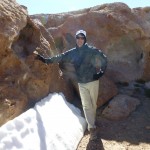

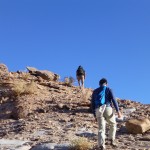
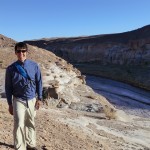
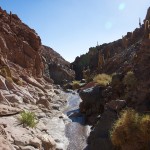


4 Responses to El Desierto de Atacama